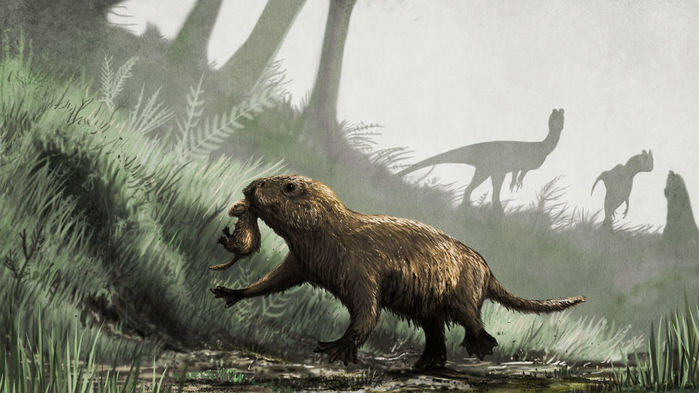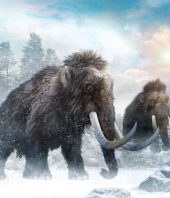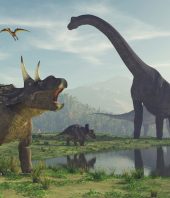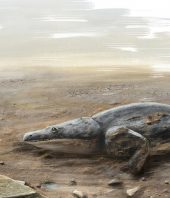The demise of dinosaurs was good news for mammals, whose numbers exploded in the aftermath. Now, a new study suggests that the behavior of mammals changed rapidly as well, as the first of our furry ancestors began venturing out in the daylight after living a primarily nocturnal existence. The switch may have even sparked the eventual evolution of our own humankind.
Paleontologists and evolutionary biologists have long thought that the original mammals were nocturnal, in part because mammals alive today still carry traits of their night-loving ancestors. Most mammals have eyes that function well in low light, for example. They also have highly developed senses of smell and hearing, and sensitive whiskers that allow them to feel what is in front of their faces—all traits that are useful in the dark.
Exactly when mammals started to venture out during the day has been a mystery, because behavior is hard to discern from fossils. Scientists rely on the shape of eye sockets and nasal cavities to infer which senses were important to an extinct animal, but those clues can be misleading.
The first ancestral mammal species to be active in the daytime probably lived around 65.8 million years ago—just 200,000 years after the mass extinction that wiped out all dinosaurs except birds, the team reports today in Nature Ecology and Evolution. The common ancestor of today’s camels, hippos, and deer, for example, probably started foraging in daylight around that time, Maor says. Today’s camels are active in the daytime, while hippos are active at night, and deer are mixed, he notes. “The daytime activity starts just as dinosaurs disappear,” Maor says. Until then, he says, it was likely too risky to venture out among the sharp-eyed—and sharp-toothed—dinosaurs. The analysis suggests the expansion into daylight happened fairly quickly after the competition died out, he says. “In evolutionary terms, 200,000 years is the blink of an eye.”
That’s consistent with the fossil record, which shows clearly that the numbers and types of mammals expanded rapidly after dinosaurs fell by the wayside. But the glimpse into the evolution of behavior is intriguing, says evolutionary biologist Lars Schmitz of Claremont McKenna, Pitzer, and Scripps colleges in Claremont, California. The work supports the idea that mammals conquered more than territory, he says. “They also expanded their behavioral repertoire quite substantially.”
And although the idea of mammals taking over spaces left empty by the dinosaurs’ demise isn’t new, having statistics to back up such a hypothesis “is absolutely necessary for the advancement of the field,” says Luca Santini, who studies mammal ecology at Radboud University in Nijmegen, the Netherlands.
Schmitz notes that one limitation of using data from living species is that lineages that died out can also give important clues to evolution’s history. “It would be awesome if one could add fossil information into this analysis,” he says. That could give an even clearer picture of when and how daytime habits emerged. “It would take a lot of effort from a lot of people,” he says, “but I think it’s doable.”
Today’s primates are mostly active during the day, Maor notes, and primate ancestors seem to have been some of the first to acquire daytime habits, according to the analysis. That head start may be why we and other apes have better color vision—and duller senses of smell and hearing—than many other mammals. Primates likely had several million years longer to evolve traits that help us be successful in the sunlight, he says.
Source: AAAS, Full Article






